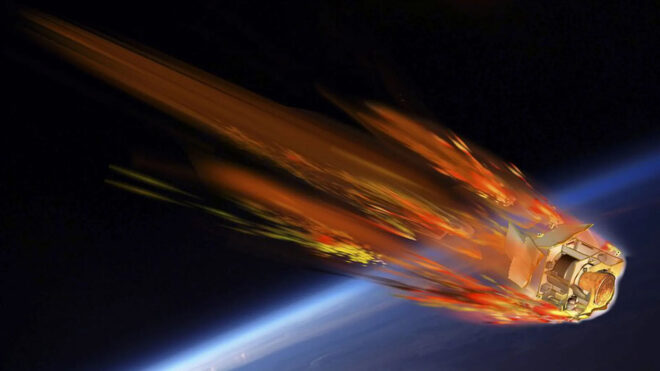The European Space Agency (ESA) will send a new satellite in the atmosphere in 2027 to see what will happen. will.
The Destructive Reentry Assessment Container Object (DRACO) mission is behind this development. The European Space Agency, which wants to analyze the disintegration situation of satellites after they enter the Earth’s atmosphere, sent orbiters into orbit for this purpose. It will send a 200 kg test satellite, which is reported to be the size of a washing machine. This satellite, which will be sent in 2027, will carry 200 different sensors and four different cameras. The satellite, which is stated to not carry any motion control system, will be inserted into the atmosphere and disintegrated. What exactly happens in this process will be examined in detail. Stating that they will have 20 minutes to receive the collected data before all the debris falls into the ocean, ESA said that with the DRACO mission, important data will be obtained so that space studies can continue without further exacerbating the ‘space garbage’ problem.
YOU MAY BE INTERESTED IN
ESA had come up with a 3D printer before this. If you missed it in the past weeks International Space Station (ISS) For the first time, a metal part was created using a 3D printer. printed. Aerospace giant for ESA Airbus A three-dimensional printer capable of metal printing developed by At the beginning of the year International Space StationHe was taken to .
melted using laser (With a temperature of 1,400 degreesThis 3D printer, which allows the production of parts using metal, will no longer require long waits for supply missions for the small parts needed on the ISS. specific to ISS Cygnus NG-20 Making a statement about the printer sent with the mission, ESA technical officer Rob Postema said: “If the system is successful, it will take our 3D printing potential in space to a new dimension through the strength, conductivity and hardness of the metal.” he said.
First prints of the 3D printer, which is reported to have a slightly longer output time, It will be returned to Earth for analysis on the next resupply mission. ESA Human and Robotic Exploration Director Daniel Neuenschwander said in a statement on the subject: “With the first metal 3D printing in space, ESA exploration teams have achieved an important milestone in on-orbit manufacturing. “This achievement, made possible by an international team, paves the way for long-distance and long-duration missions where it will be essential to create spare parts, structural components and special vehicles in space.” he said.
